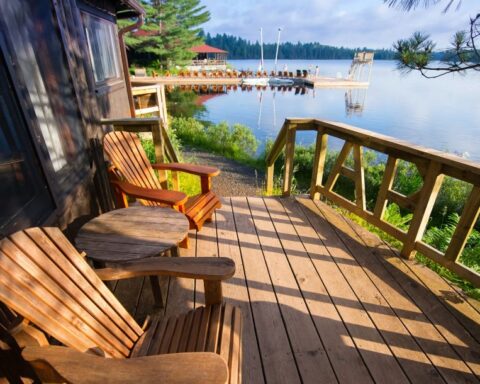More Australian households are installing solar panels to access solar energy. The simple and basic rooftop solar PV system can be added to homes and businesses without too much expense. One of the best parts of solar energy is that the cost of purchase and installation can be recovered in a short time span. If excess energy is produced and fed back to the grid (where everyone else obtains their energy), you can even gain a payment from your solar panels.
Buying a System

When you proceed with the purchase of a rooftop solar panel system this can be a big decision. You want to do as much research as possible to decide on the correct system for your home. When it comes to solar, there really is not one size fits all and there are a wide range of components and aspects to consider. The truth is that solar systems eventually pay for themselves, but you will need to wait for several years to see the return. It is best to choose a reputable company to purchase these panels from as it will protect you in the long run. Check into any rebates that are available to you as a homeowner before you make your final purchase. Solar panel systems can be costly, but those costs are becoming lower with many new developments in technology.
How can you get Paid?
There is a large payment at the front end for your panel purchase and installation. The savings comes in over the next several years on the amount that you do not spend on electrical costs. If you decide to install several panels and do not use all the energy that they produce, that excess energy is fed back into the grid and that is paid for by the electrical company who will pay the homeowner or business that is sending that energy back to the grid. If you run a system without batteries, it will lessen the amount of time you take to be paid back.
Planning Your Purchase
When you decide to invest in solar energy, it is an investment for the long term. The technology behind solar energy is constant evolving and this can ensure that you have access to better rebates and offers when you decide to purchase solar panels. If you plan to expand your use of solar energy, you will want to ensure that the products that you purchase can be expanded so that more panels and batteries can be added to your system over time. It is important to research the panels that you plan to purchase because lower cost panels are not always the best deal.
How to Choose Panels that are Right for you

Solar panels are designed to harness the energy produced by sunlight and convert it to electricity. This system is referred to as a photovoltaic system or solar PV. Solar panels are available in a wide range of power levels and wattages. There are many brands to choose from with different technologies and they range in efficiency. In short, although solar panels may look the same, they vary in quality, power levels and reliability.
You need a large rooftop area that receives a lot of sunlight for your solar panels. Solar panels in Australia come with a standard product warranty of 10 years and should also have a performance warranty of 25 years. The problem with these warranties is that some manufacturers of solar panels may not even be in business for longer than 10 years.
Solar Inverters

As orcasolarlighting.com.au comments, the solar inverter is one of the key pieces that comprise the solar PV unit. This component converts direct current produced by solar panels and converts it to AC or alternating current which is the electricity that homeowners need. A computer program or app on your smart phone can be utilized to keep track of the generation and consumption from solar panels. There are several types of inverters that are used in home solar panels, including:
- Hybrid inverter: performs the function of the battery inverter and the string inverter and can be installed and used without batteries which makes it perfect for expansion.
- Battery-only inverter: can be retrofit into an existing string and captures any electrical energy to store for use later.
- String inverter: most used in households and are connected to a string of solar panels. If larger set ups are used, then more than one string inverter will be needed. The main drawback to these inverters is that they need full sun and will perform poorly if located in shade. These systems usually have a warranty of between 5 and 10 years which covers off parts and labour.
- Micro inverter: these smaller units are installed on racks and then attached to the panel and range from 200 to 250 w per unit. These work well if the panels are in an area where these is a lot of shade. The other advantage of these inverters is that they cost significantly less than the string inverter.
What About Batteries?

Solar panels store any excess electricity that is generated from the array of panels into rechargeable batteries. This ensures that power is readily available to be utilized on days where there is little sunlight or at night. The cost of lithium-ion batteries has made the process of storing solar generated energy much easier. You only need to purchase as many batteries as are required to back up the energy you require when your panels are not absorbing sunlight. The balance of the energy that you produce can be fed back into the grid to put you into profit. A battery storage system needs to be installed correctly or it can pose serious safety concerns, and this could cause a problem for insurance coverage.
A battery storage system allows you to:
- Offset your cost of power during peak energy usage times.
- Provide you with the electricity you need when the power is out.
- Insulate you from exposure to the rise in future electrical costs.
- Reduce your reliance on the electrical grid.
- Allow you to capture solar energy that could be sent to the grid, saving it for your use later.
You will want to choose a battery system that works best for your needs based on a variety of factors including:
- Total cost of battery storage system.
- Does the battery store enough energy to supply your needs?
- Is there enough space for the installation and storage of the battery?
- Are there any safety concerns?
- Could the battery be recycled?
Does the System Need to be Cleaned?
Solar panels are fairly low maintenance. They simply need to be wiped clean occasionally with a soft cloth. If any part of your panel is damaged, a trained professional should examine the system and make the necessary repairs.
If you plan to install solar panels, you should take the time to investigate all the important factors. Which system works best for you and supplies your needs? You want to know that the system that you choose will be able to maintain and is covered under warranty if something in the system fails. Many Australians are enjoying the benefits of solar energy and the convenience of battery storage.




